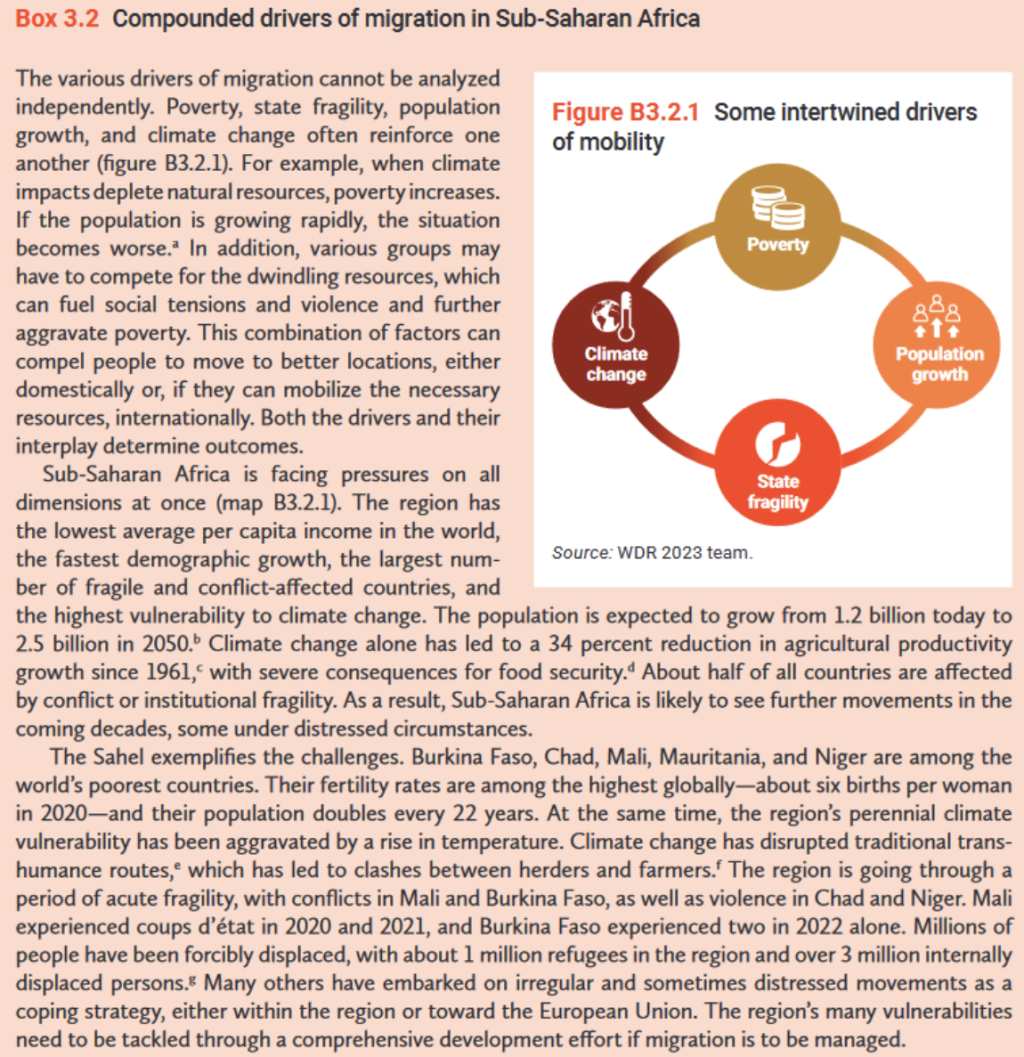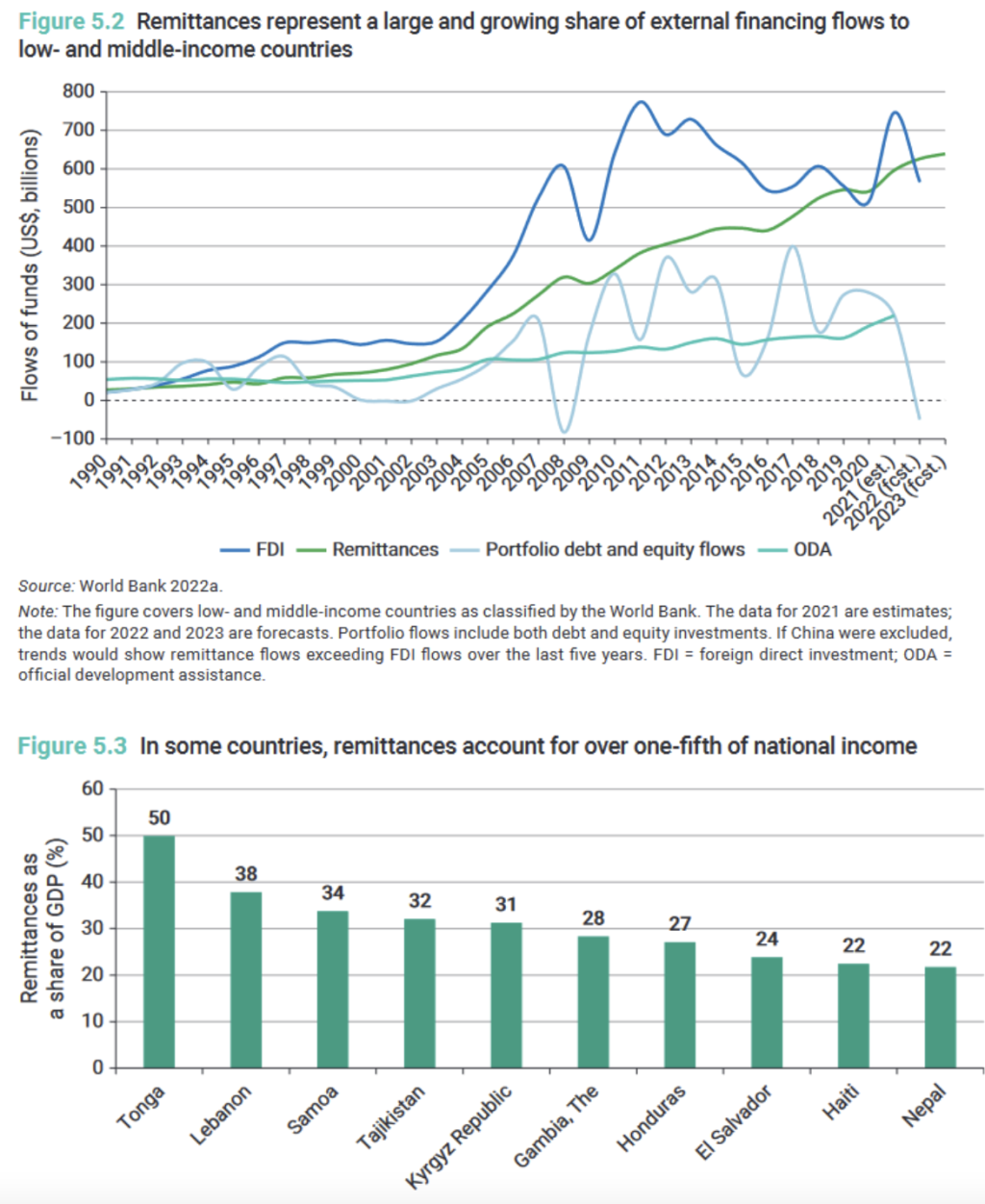Highlights:
Migration is a development challenge. About 184 million people—2.3 percent of the world’s population—live outside of their country of nationality. Almost half of them are in low- and middle-income countries. But what lies ahead?
As the world struggles to cope with global economic imbalances, diverging demographic trends, and climate change, migration will become a necessity in the decades to come for countries at all levels of income. If managed well, migration can be a force for prosperity and can help achieve the United Nations’ Sustainable Development Goals.
World Development Report 2023 proposes an integrated framework to maximize the development impacts of cross-border movements on both destination and origin countries and on migrants and refugees themselves. The framework it offers, drawn from labor economics and international law, rests on a “match and motive” matrix that focuses on two factors: how closely migrants’ skills and attributes match the needs of destination countries and what motives underlie their movements. This approach enables policy makers to distinguish between different types of movements and to design migration policies for each. International cooperation will be critical to the effective management of migration.

Reaping the full development benefits of remittances
Remittances to low- and middle-income countries have increased dramatically over the last two decades. They were estimated at US$605 billion in 2021, even though their measurement raises technical difficulties. Remittances account for about one-third of the total recorded capital inflows to low- and middle-income countries. They also account for a large share of the gross domestic product (GDP) in several countries in Central America and Central Asia, in small low-income economies, and in countries with a large diaspora, such as Lebanon.
The remittances they can send their families is often a primary motivation for people to migrate. Many families decide together on the optimal migration strategy—who migrates, where, how long, and how remittances will be spent.

Remittances contribute to poverty reduction across a variety of dimensions:
-
Remittances increase household income.
-
Remittances increase consumption and food security.
-
Remittances allow households to spend more on education and health care.
-
Remittances enable some household members to reduce their working hours.
-
Remittances help close some gender gaps.
In addition to their immediate effects on available income, remittances contribute to poverty reduction through a variety of channels:
-
Remittances protect households from shocks.
-
Remittances can facilitate entrepreneurship by easing financial constraints.
-
Remittances reduce poverty even in households that do not receive them.
| Year of publication | |
| Geographic coverage | Global |
| Originally published | 23 Jun 2023 |
| Related organisation(s) | WFP - World Food Programme |
| Knowledge service | Metadata | Global Food and Nutrition Security | Food security and food crises |
| Digital Europa Thesaurus (DET) | migrationRemittancespoverty |
